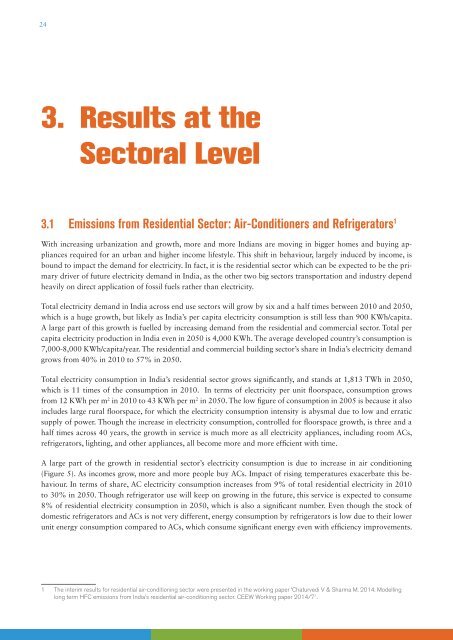Hydrofluorocarbon Emissions-Shakti Sustainable Energy Foundation
One such critically important category of gases is hydrofl uorocarbon (HFC). HFCs are potent greenhouse gases and are expected to contribute signifi cantly to global warming by 2050 (IPCC/TEAP, 2006; Velders et al., 2009; Gschrey et al., 2011; Miller & Kuijpers, 2011; Höglund-Isaksson et al., 2013). Read more information visit: http://shaktifoundation.in/report/indias-long-term-hydrofluorocarbon-hfc-emissions-detailed-cross-sectoral-analysis/
One such critically important category of gases is hydrofl uorocarbon (HFC). HFCs are potent greenhouse gases and are expected to contribute signifi cantly to global warming by 2050 (IPCC/TEAP, 2006; Velders et al., 2009; Gschrey et al., 2011; Miller & Kuijpers, 2011; Höglund-Isaksson et al., 2013). Read more information visit: http://shaktifoundation.in/report/indias-long-term-hydrofluorocarbon-hfc-emissions-detailed-cross-sectoral-analysis/
Create successful ePaper yourself
Turn your PDF publications into a flip-book with our unique Google optimized e-Paper software.
24<br />
3. Results at the<br />
Sectoral Level<br />
3.1 <strong>Emissions</strong> from Residential Sector: Air-Conditioners and Refrigerators 1<br />
With increasing urbanization and growth, more and more Indians are moving in bigger homes and buying appliances<br />
required for an urban and higher income lifestyle. This shift in behaviour, largely induced by income, is<br />
bound to impact the demand for electricity. In fact, it is the residential sector which can be expected to be the primary<br />
driver of future electricity demand in India, as the other two big sectors transportation and industry depend<br />
heavily on direct application of fossil fuels rather than electricity.<br />
Total electricity demand in India across end use sectors will grow by six and a half times between 2010 and 2050,<br />
which is a huge growth, but likely as India’s per capita electricity consumption is still less than 900 KWh/capita.<br />
A large part of this growth is fuelled by increasing demand from the residential and commercial sector. Total per<br />
capita electricity production in India even in 2050 is 4,000 KWh. The average developed country’s consumption is<br />
7,000-8,000 KWh/capita/year. The residential and commercial building sector’s share in India’s electricity demand<br />
grows from 40% in 2010 to 57% in 2050.<br />
Total electricity consumption in India’s residential sector grows significantly, and stands at 1,813 TWh in 2050,<br />
which is 11 times of the consumption in 2010. In terms of electricity per unit floorspace, consumption grows<br />
from 12 KWh per m 2 in 2010 to 43 KWh per m 2 in 2050. The low figure of consumption in 2005 is because it also<br />
includes large rural floorspace, for which the electricity consumption intensity is abysmal due to low and erratic<br />
supply of power. Though the increase in electricity consumption, controlled for floorspace growth, is three and a<br />
half times across 40 years, the growth in service is much more as all electricity appliances, including room ACs,<br />
refrigerators, lighting, and other appliances, all become more and more efficient with time.<br />
A large part of the growth in residential sector’s electricity consumption is due to increase in air conditioning<br />
(Figure 5). As incomes grow, more and more people buy ACs. Impact of rising temperatures exacerbate this behaviour.<br />
In terms of share, AC electricity consumption increases from 9% of total residential electricity in 2010<br />
to 30% in 2050. Though refrigerator use will keep on growing in the future, this service is expected to consume<br />
8% of residential electricity consumption in 2050, which is also a significant number. Even though the stock of<br />
domestic refrigerators and ACs is not very different, energy consumption by refrigerators is low due to their lower<br />
unit energy consumption compared to ACs, which consume significant energy even with efficiency improvements.<br />
1 The interim results for residential air-conditioning sector were presented in the working paper ‘Chaturvedi V & Sharma M. 2014. Modelling<br />
long term HFC emissions from India’s residential air-conditioning sector. CEEW Working paper 2014/7’ .

















